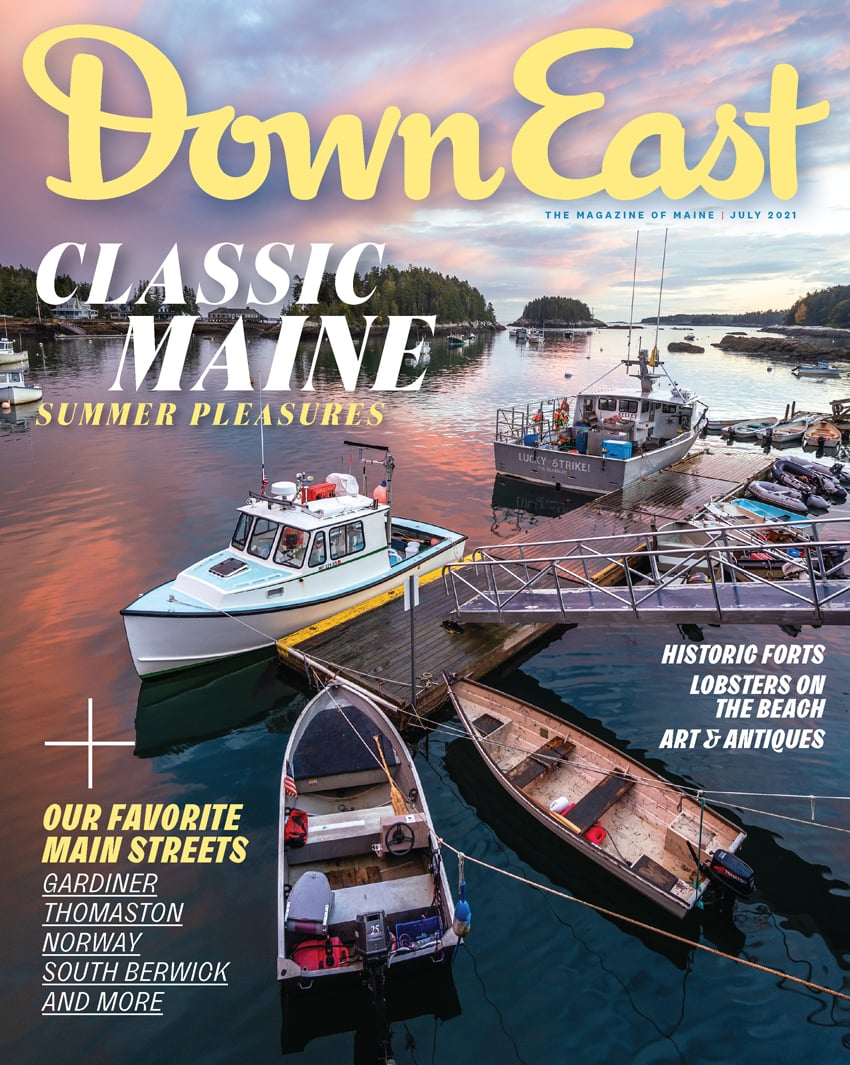By Susan Hand Shetterly
I’ve had an odd recurring dream during the pandemic. It’s set under water, a vision blurred by shifting currents and light, and I am in it, moving ahead with slow swimming motions. Seaweeds sway around me like trees in a gentle wind, and fish weave in and out of the seaweeds, going about their business as if I am not there, not watching them. Beneath me, sea anemones wave stinging tentacles. Across an uneven ledge, mussels are packed together, their shells slightly open, their orange mantles endlessly rippling and ruffling as they siphon water in and out. They look like living rugs.
Into this dreamscape comes a right whale, lumbering through the kelps. A school of bluefin tuna tears into a school of herring. And always, big cod pass through the seaweeds, beautiful fish with fleshy barbels dangling from their chins and clean, white lateral lines running the length of their bodies.
This dream is of Cashes Ledge. It’s a real place, an ancient chunk of mountain range with intermittent mud trenches, about 100 miles out into the Gulf of Maine, southeast of Portland. It has been stirred into life for me by underwater photographers whose work I have pored over this past year. The dream is a playback of their efforts to show people what a last best place can look like. On the edge of sleep, it comes to me as my own dive, no photographer in sight. But in truth, I will never tug on a wetsuit, strap on an oxygen tank and goggles, and jump off a boat, floating down to touch the solid ground of the ledge as I do so effortlessly in the dream.
The dream is a playback of their efforts to show what a last best place can look like.
Five hundred and fifty square miles surrounding Cashes Ledge are semi-protected, designated as essential fish habitat and off-limits to commercial fishing that might damage the dense kelp-forest habitat. Ammen Rock, a slab that catches the sunlight at 40 feet below the surface, is the underwater range’s highest peak, bathed in a rich mix of currents. Wild lives and forests of seaweeds swirl around it in such profusion, the ecosystem rivals a thriving coral reef. Even in the dream, I’m astonished.
Scientists visit the ledge to study it in detail because it is a template: this was what the Gulf of Maine looked like in the first years of white contact. In the early 17th century, underwater areas of such richness were commonplace. Overfishing eventually gutted most of them. The ragged peaks of the ledge made it dangerous to trawl, and thus the mountains protected their own. But Cashes Ledge is more than a nostalgic glimpse of what used to be. Conservation biologists who know the ledge say it has become a nursery, where native species grow up, spawn, and eventually spread out into the larger gulf, repopulating it. The ledge offers a means of healing the places that have been damaged.
It’s time we focus on learning more about how life is lived beneath the water. Cashes Ledge can teach us. It offers details we’ve missed about how healthy populations of ocean species interact and thrive, and it can show us how a robust Northeast Atlantic ecosystem might respond to a changing climate. But thanks to photographers, what Cashes teaches right now, right in our own homes, is how beautiful the wild can be.
These images don’t fade away. They are, for me and many others, as present as what we see every day. Like Patten Stream in my town, Blue Hill Mountain the next town over, and the wide mudflats at low tide here at Morgan Bay, Cashes Ledge has become very close.




